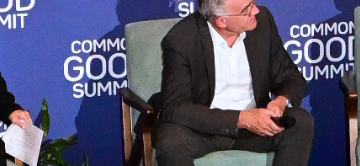This December France will play host to crowds of diplomats as the United Nations holds make-or-break talks on climate change. The challenge for delegates in Paris is to achieve a binding agreement that will limit the increase in the world’s temperature to no more than 2°C. It is an incredibly difficult task. But economics can shed light on which strategies have the best chance at success.
Climate change is a global commons problem. In the long run, most countries will benefit from a massive reduction in global warming. Unfortunately, there are powerful incentives to leave the burden of reducing greenhouse gas emissions to others. The approach often proposed to solve this free-rider problem is to make polluters pay a uniform price for their emissions. This encourages polluters to take all available steps to reduce emissions which cost less than that price, which guarantees that we get the best environmental benefit from our collective sacrifices.
This approach, though solid in theory and validated in practice for other pollutants, has not been embraced by the world’s governments. At the 2009 Copenhagen conference the idea of a global carbon price was dropped, and the UN’s climate-change convention became a chamber for the registration of non-committal pledges. This “pledge-and-review” mechanism is likely to be confirmed in Paris. Under this convention countries register their voluntary climate actions. There is no coordination in their method or measurement.
The pledge-and-review strategy is completely inadequate. First, it lacks the efficiency of a coherent carbon price. Second, the absence of any binding commitment limits its credibility and makes it very tempting for countries to renege on their pledges. In Paris, countries will have every incentive to make their pledges hard to compare to others, and impossible to verify or enforce. Third, the pledge-and-review process exacerbates the free-rider problem, because staying carbon-intensive puts countries in a strong position to achieve a better deal at the bargaining table in the future.
The world could do better. A carbon tax, collected by individual countries, looks a far more effective tool. Countries could be required to impose the common price as long as all others do too, and domestic revenues from the tax could be recycled internally. Transfers to developing or reluctant countries, such as through the Green Climate Fund, could be set up to address concerns about fairness.
Unfortunately, a green fund is too transparent to be politically acceptable, as governments are usually reluctant to be seen giving vast amounts of money to foreigners. Enforcement of a carbon tax is also problematic, because governments have strong incentives to turn a blind eye toward certain polluters, to underestimate their pollution, or to compensate them by other means such as coal subsidies or tax cuts on fuel. Foreigners cannot easily impose stringent tax collection when a country is reluctant to strengthen it, as has been observed in Greece under the Troika.
By contrast, an international enforcement mechanism focused on the quantity of national emissions is relatively straightforward. All one must do is monitor a country’s CO2 emissions, and modern technologies make that easy.
We therefore favour a cap-and-trade scheme, in which a multilateral organization either auctions or allocates tradable permits to participating countries, which entitle the holder to a certain level of emissions. Cap-and-trade schemes to be certain must be properly conceived, as experience with the European Union's emissions trading system demonstrates. However, cap-and-trade policies have spread round the world, to California, South Korea and parts of China for CO2 emissions as they had done for other pollutants, suggesting their implementation is a practical possibility.
A market for these permits would ensure that a single carbon price emerges from mutually beneficial trades. A country would purchase additional permits when its national emissions exceed its allowance, and any surplus permits could be sold. Compensations could be handled through the allocation and trading of permits.
Sovereign borrowing raises concerns about countries’ commitment to repay creditors because sanctions for defaulting are limited. Similarly, even if a good agreement is reached on climate change, it must still be enforced. Naming and shaming should be encouraged but as we have seen with the Kyoto Protocol “commitments”, it has limited effects. Countries can always make excuses.
There is no bulletproof solution to the problem of enforcement, but at least two instruments should be used against countries which break climate agreements. First, the WTO should treat non-compliance as a form of dumping, leading to sanctions. Second, non-compliance should commit future administrations and should be treated like sovereign debt. In a cap-and-trade system, a shortfall of permits at the end of the year would add to the public debt of offending country. The conversion rate would be the current market price. Non-participating countries should be punished with border taxes administered by the WTO.
There is no perfect political-economy solution to climate change, which wraps economic efficiency in a politically convenient package. But the current pledge-and-review strategy is unacceptable, and will just prolong the waiting game. A carbon tax, which is efficient and reasonable, is clearly superior. But the cap-and-trade approach combines the efficiency of the carbon tax with easier enforcement. For that reason we believe it should sit at the heart of any successful global climate agreement.





